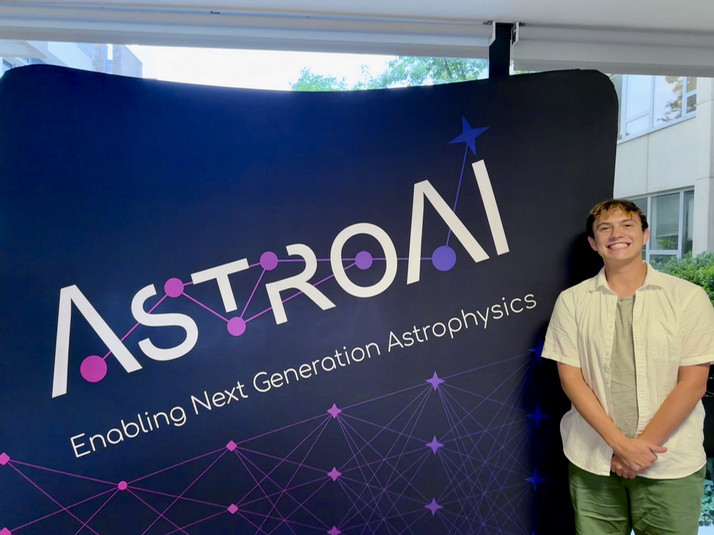From July 7-11, undergraduate Astronomy & Astrophysics major Bradley Hutchinson attended the AstroAI Workshop at the Harvard – Smithsonian Center for Astrophysics. The Workshop focused on the application of Artificial Intelligence (AI) and Machine Learning (ML) in astrophysics. He learned about applications in many areas of study, including stars, galaxies, and exoplanets. In addition, he made new connections with researchers in the field, gained insights that will help him improve his future work, and gave a poster presentation.
Bradley's poster presented his current research with faculty member Caty Pilachowski and IU alumnus Christian I. Johnson at the Space Telescope Science Institute. This work proposes a new approach to analyze massive, photometric datasets efficiently and to identify rare stellar populations hidden within them. His approach exploits the sequential nature of multiband photometry, which traces the shape of the underlying spectral energy distribution (SED) and enables the use of a long-short term memory autoencoder (LSTM-AE). The LSTM-AE takes the photometry as curves, learns a compressed two-dimensional latent space representation, and then reconstructs the original curve from this representation. His findings show that this model outperforms a standard AE, which treats photometry as a vector without considering its sequential structure; that the latent space provides an easy-to-interpret, low-dimensional representation for analysis and visualization; and that rare stellar types with atypical SED shapes are poorly reconstructed and thus easily detected by the model.



 The College of Arts
The College of Arts